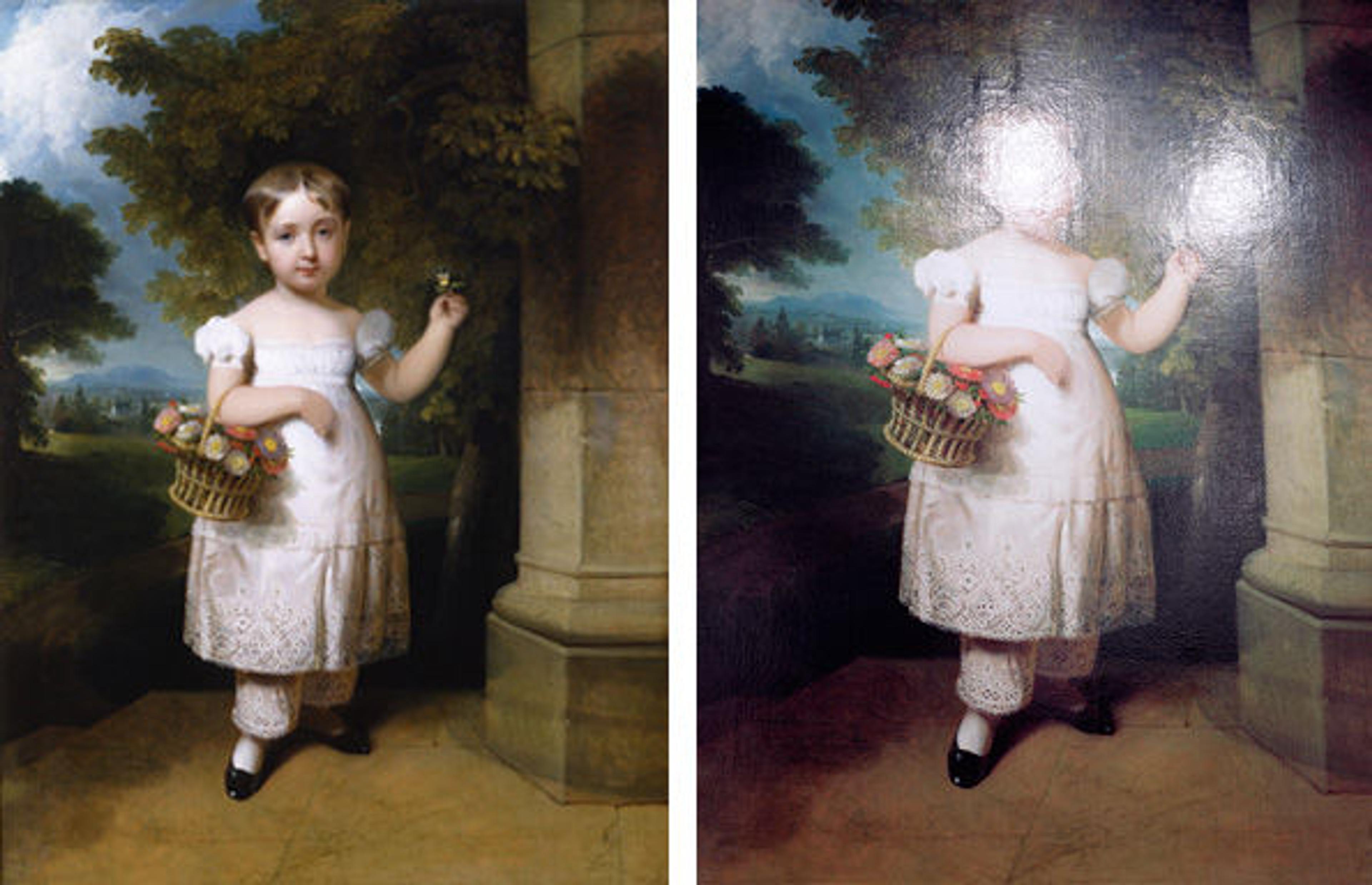Left: Henry Inman (American, 1801–1846). Portrait of a Little Girl (Cornelia Rutgers Livingston), 1833. Oil on canvas; 48 1/2 x 36 1/4 in. New Britain Museum of American Art, John Butler Talcott Fund, 1952.03. Right: Tim Davis (American, b. 1969). Cornelia Rutgers Livingston, 2003. Chromogenic print; Image: 52 x 40 in. (132.1 x 101.6 cm); Frame: 52 1/2 x 40 1/2 in. (133.4 x 102.8 cm). The Metropolitan Museum of Art, New York, Gift of Susan and Arthur Fleischer Jr., 2011 (2011.555.8) © Courtesy of the artist and Greenberg Van Doren Gallery, NY
«The portrait on the left was painted by the American artist Henry Inman in 1833. The work on the right is a photograph of Inman's painting, taken by the artist Tim Davis in 2003.» In Davis's artwork, the young girl's face and whatever she is holding in her left hand are both blurry. I am drawn to this mysterious figure, searching for features that will help me identify her. I think this work pays respect to the original painting while also becoming its own unique piece. Tim Davis takes photographs from specific angles to create certain effects. Here he uses the Museum's lighting to create his own work of art.
–Genevieve
Tim Davis's photograph is my favorite piece in the exhibition Spies in the House of Art because it makes me use my imagination. Since the subject's face and hand are replaced with bright spots of light, I have to look at other parts of the painting to gather information about her. This is a different way of looking at art. This is the artist's unique vision; he may have used this piece to portray art in a new light. In this exhibition, artists use the camera in different ways to create art through a camera lens. The artist includes the original work as a template from which he creates his own work of art.
–Alisha
